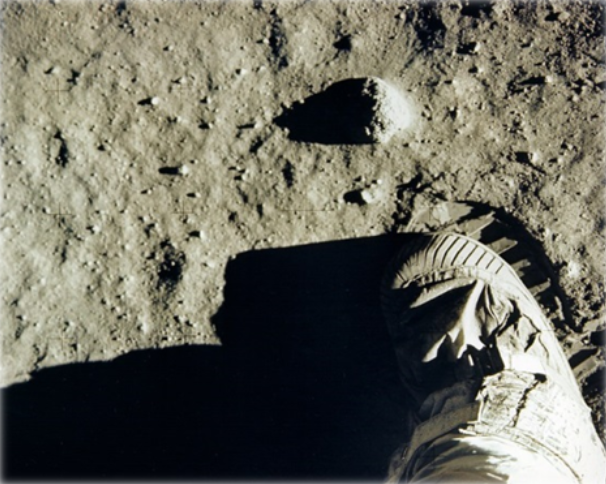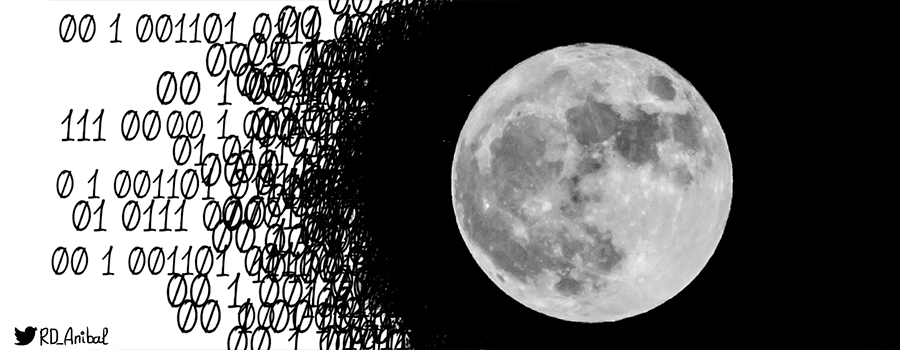It is July 20th, 1969, 20:18:04 UTC and after 102 hours, 45 minutes and 39.9 seconds of travel “the eagle has landed” and Neil is about to descend the ladder and touch an unknown surface for the first time: “That’s one small step for [a] man, one giant leap for mankind“. That 1969, Neil Armstrong, Michael Collins and “Buzz” Aldrin changed the world riding the biggest rocket ever built to the moon.
Some people may forgot it, others like me were not born at that time, but space race had its own digital transformation similar to the one foreseen for the industry and general public. Apollo program was the culmination of such first digital revolution in space exploration.
The landing achievement was, to a great extent, met thanks to the electronics onboard both the Apollo Command Module (CM) and Lunar Module (LM), the AGC or Apollo Guidance Computer. The computer was one of the first integrated digital circuit-based computers. With “just” 32kg of weight and a mere 55W of consumption this technical wonder was able to coordinate and control many tasks of the space mission, like calculating the direction and navigation angles of the spacecraft to commanding reaction control jets and orientate it in the desired direction. Moreover, the computer included one of the first demonstrations of a “fly-by-wire” feature where the pilot doesn’t command the engines directly but through control algorithms programmed into the computer. In fact, this computer was the basis for subsequent control of the space shuttle, military and commercial fly-by-wire systems.
As usual with this kind of breakthroughs, it did not happen overnight but through a series of incremental innovations done before.
By the 1950s, MIT Instrumentation Laboratory (IL) designed and developed the guidance system of Polaris ballistic missiles. Initially built with analog computers, soon they decided to go digital to achieve the accuracy required for the computations of missile trajectories and control.

Before President Kennedy set the ambitious goal of “… going to the moon in this decade …” 7 years earlier the first lunar landing, and after the launch of Sputnik in 1957, a Mars exploration study started at IL MIT’s laboratory. The design of a Mars probe set the basic configuration of the future Apollo guidance system including: a set of gyroscopes to keep the probe oriented, a digital computer and an optical telescope to orient itself relative to the moon and stars.
The launch of Sputnik in 1957 fueled America’s ambition to put the first human in space, but also contributed to the public debate of the pilots in the space race. A similar discussion to current views of the role of the worker in the factory. Should the astronaut just be payload or take full control of the spacecraft? Once aircraft pilots earned the task of being at the controls, several tests showed that it was nearly impossible that they would be able to control all the aspects of a mission due to the fast reaction needed and the amount different control commands. Hence, pilots would need some automatic and reliable help for the pilot, and that was one of the main functionalities of the AGC.
Reliability was then one of the main concerns of the mission. Polaris program took 4 years to design a guidance control for a weapon in the air a couple of minutes. Kennedy’s bet of taking a man to the moon in less than 7 years meant to develop a guidance and control system for a spacecraft that should work without failure in a trip of more than a week of duration. The required levels of reliability were of more than two orders of magnitude. If a Polaris missile failed, a new one would take off. A failure in the spacecraft meant killing an astronaut.

Much of the reliability of the flight was in the shoulders of the Apollo Guidance Computer, and at some point of the program there were too many tasks planned, like complex guidance maneuvers, to be physically hardwired into electronics. To achieve these tasks it was needed software. Although software barely was taken into account at the beginning of the program it meant the difference between achieving the goal or program’s complete failure. The computer was the interface between the astronaut and the spacecraft, which in the end meant that computer software “controlled” the spacecraft, a revolution for that time. Today software is everywhere but then in the 60’s, software was seen as a set of instructions on punched cards. AGC software programs (frozen at 3 to 4 months before each launch) were “hard-wired” as magnetics cores and wires in a permanent (and reliable) memory but saved a lot of time, effort, and budget. In fact, it can be said Apollo software was more like a “firmware” using today’s vocabulary.
Today’s challenge of revolutionize industry through digital transformation can’t happen without the help of digital enablers. 48 years ago, digital electronics and first software programs were the “digital enablers” to achieve that “one small step for [a] man, one giant leap for mankind“. Today’s “Digital transformation is not an option” sounds like a cliché, a hype, a slogan from digital providers, but looking back in the history, the digital transformation in the Apollo program meant the difference of not achieving moon landing.
- Behind the Curtain: Explainable Artificial Intelligence - 12 July 2024
- Digital Twin: Industry 4.0 in its digitised form - 9 October 2023
- Artificial Intelligence, an intelligence that needs non-artificial data - 16 December 2022

